#reign: Napoleon iii
Text
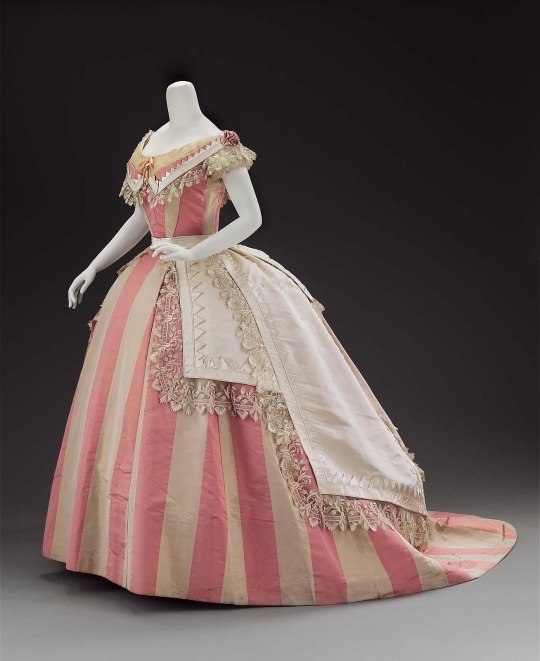
Pink Striped Evening Dress, ca. 1865, French.
Designed by Mme Roger
MFA Boston.
#pink#stripes#silk#evening dress#evening#dress#womenswear#extant garments#19th century#mfa boston#mme Roger#france#french#1865#1860s#1860s france#1860s dress#candy pink#second empire#reign: Napoleon iii#1860s extant garment
29 notes
·
View notes
Text

SO true
#les mis#victor hugo#learning about Hugo's war crimes really does completely shatter your perspective of him#and reframes a lot of the book#im making this as a joke meme but yeah it was Awful#I'm not sure if Pilf or someones already made a post explaining it for tumblr?#the basic context is that Hugo was on 'the wrong side' of the Barricades in 1848#working with Napoleon III's regime to violently crush a (justified) working class rebellion against the regime's new draconian labor laws#edit: I got it wrong it was in the interim regime between Philippe and Napoleon iii — not Napoleon iii’s official reign yet#he killed a lot of people (even when he couldve saved lives with diplomacy)#in large part because he was also suicidal at the time#and yeah the more context ya get the worse it looks#yeah his politics changed drastically later on but like. Yike#like he later became very pro barricade and anti Napoleons but. yee#maybe part of why his writing on Javert is good is because he has experience committing atrocities for an unjust authority#:P
551 notes
·
View notes
Text
After Pokémon Legends Z-A was announced yesterday, I did some cursory digging into French history to figure out what part of it the game might be based on.
(This is based on a quick reading, I am not a historian so I apologise for anything I misinterpreted, left out, or got wrong)
Now, we already know Lumiose City is based on Paris. The general architecture is similar, Prism Tower is based on the Eiffel Tower, and Lumiose Museum is based on the Louvre (though in X and Y it looks more like the UNESCO HQ).
The trailer mentions the "Lumiose Redevelopment Plan". Based on this, it's likely that the goal of the game is to build Lumiose City up to, or at least close to, how it looks in X and Y, similar to how Legends Arceus was about getting the Pokéball rolling on humanity's understanding of Pokémon.
If so, we have a possible historical event we can point to as it's basis: Georges-Eugène Haussmann's renovation of Paris under the instruction of Napoleon III.
The renovation started in 1853, and Haussman's involvement ended at the start of 1870 when he was effectively fired by the Emperor. The work started by Haussmann would be finished over the course of the next 50 years without his involvement.
Most notably, however, Napoleon III's reign also ended in 1870. He was pressured into declaring war on Prussia in 1866, got curb-stomped and captured in Sedan in 1870, and was ousted in absentia.
Assuming the game is based on Haussmann's renovation and time frame is similar, the end of Pokémon Legends Z-A could potentially involve the deposition of the Emperor of Kalos.
79 notes
·
View notes
Text
Books about Napoleonic era (and Polish history) - 3
Good day, dear all, and let me share with you some books I've read recently.
And because today is the birthday of Tadeusz Kościuszko I'll start with a biography of him The Peasant Prince, by the American historian Alex Storozynski:

2. One more position about the Polish history, in English, I'd like to recommend you is Richard Butterwick's The Polish-Lithuanian Commonwealth, 1733–1795: Light and Flame, dedicated to the reigns of Polish-Lithuanian two last kings, Augustus III Wettin and Stanisław August Poniatowski:
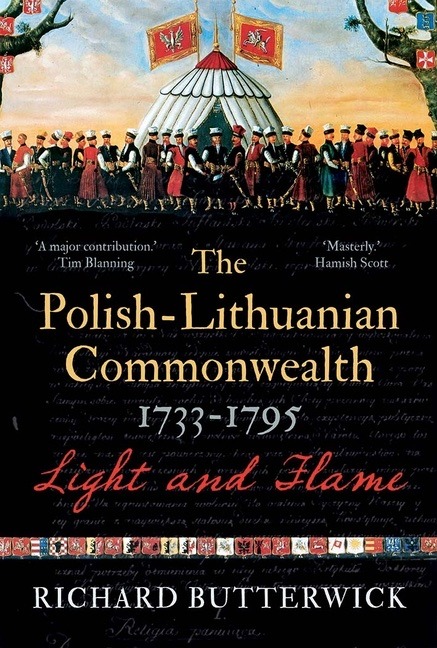
From the topic of Polish history let's switch to the French one.
3. One more addition to my collection of Talleyrand's biographies was this one, written by Robin Harris:

4-5. Then, there were two books about Napoleon's private life, by Octave Aubry and Sigrid-Maria Größing:
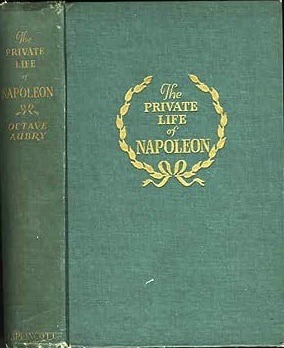

6-7. A study on the topic of French revolutionary and imperial generals, by Georges Six, and George Nafziger's Imperial Bayonets. (These were books with lots of military details, so I can't say I've enjoyed them thoroughly, rather not belonging to their target audience))
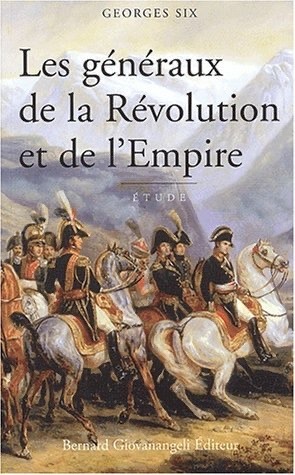

8. And this is a book I really liked, The anatomy of Glory by Henry Lachouque! And though its subtitle (Napoleon and his Guards) kinda states the book will be focused on the Imperial Guards, in fact its topics turned out much more wider, including information on Napoleon himself, France and even some details of the usual life of that times:

9. The book majority of you have already read, The Iron Marshal, a biography of Louis Nicolas Davout by John Gallaher:

10-11. And the last but not the least - two books on Murat. The first is a book by the French historian Jean Tulard and the second is an impressive work of Sarah Hammel @joachimnapoleon.


Thanks a lot, Sarah, for letting as see Joachim Murat through his letters, from his own point of view!
#books#napoleonic era#history books#kościuszko#tadeusz kościuszko#Alex Storozynski#Polish-Lithuanian Commonwealth#Richard Butterwick#Talleyrand#charles maurice de talleyrand périgord#Robin Harris#napoleon#napoleon bonaparte#Octave Aubry#Sigrid-Maria Größing#Georges Six#George Nafziger#Henry Lachouque#Louis Nicolas Davout#John Gallaher#joachim murat#jean tulard#Sarah Hammel
41 notes
·
View notes
Text
Round 2: Friedrich Wilhelm III vs Wilhelm I
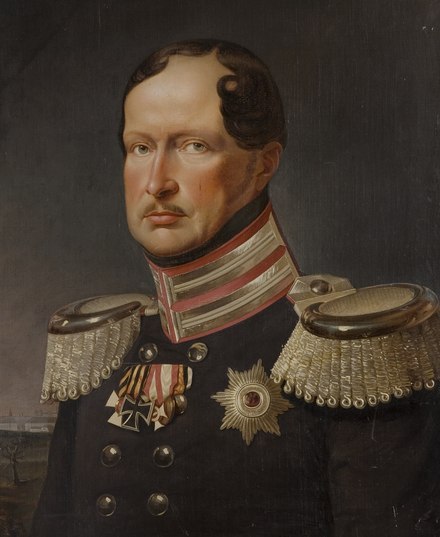

Friedrich Wilhelm III (r. 1797-1840)
A weak willed and indecisive man, it was only after immense pressure from his wife that Friedrich Wilhelm took up the banner against Napoleon. It was under his reign that the disastrous defeats at Jena and Auerstadt took place and that Prussia was carved up into the Confederation of the Rhine.
His promise of a constitution galvanized the Prussian people to take up arms, though he ultimately failed to follow through once the war had ended.
Despite his ineptitude as a leader and general, he was quite a good father. His marriage to Louise von Mecklenburg-Strelitz was a peaceful and happy one and his relationship with his kids was quite impressive for a Hohenzollern. (Note: Low bar - T)
Wilhelm I (r. 1861-1888)
Wilhelm der Große
As the second son of Friedrich Wilhelm III, it was never expected that Wilhelm would take up the crown. As was his duty as a German prince, Wilhelm joined the military. There he served under General Blücher in the campaign against Napoleon and won the Iron Cross for his valiant actions on the battlefield.
Nowadays he is fittingly known as "Wilhelm the Great" for his role in the unification of Germany. It was under his guidance that Otto von Bismarck was appointed Minister-President of Prussia during the 1862 crisis and it was with his permission that the Iron Chancellor reshaped the map of Europe to facilitate Germany's ascension.
25 notes
·
View notes
Text

Albert Gregorius - Portrait of King Joao VI - 1826
Dom John VI (Portuguese: João VI; 13 May 1767 – 10 March 1826), nicknamed "the Clement", was King of the United Kingdom of Portugal, Brazil and the Algarves from 1816 to 1825. Although the United Kingdom of Portugal ceased to exist de facto beginning in 1822, he remained its monarch de jure between 1822 and 1825. After the recognition of the independence of Brazil under the Treaty of Rio de Janeiro of 1825, he continued as King of Portugal until his death in 1826. Under the same treaty, he also became titular Emperor of Brazil for life, while his son, Emperor Pedro I, was both de facto and de jure the monarch of the newly independent country.
John VI was born in Lisbon in 1767 during the reign of his maternal grandfather, King Dom Joseph I of Portugal. He was the second son of the Princess of Brazil and Infante Peter of Portugal, who later became Queen Dona Maria I and King Dom Peter III. John became heir to the throne when his older brother, Prince José, died of smallpox in 1788 at the age of 27. Before his accession to the Portuguese throne, John bore the titles Duke of Braganza, Duke of Beja, and Prince of Brazil. From 1799, he served as prince regent due to the mental illness of his mother. In 1816, he succeeded his mother as monarch of the Portuguese Empire, with no real change in his authority, since he already possessed absolute powers as regent.
One of the last representatives of absolute monarchy in Europe, John VI lived during a turbulent period; his reign never saw a lasting peace. Throughout his period of rule, major powers, such as Spain, France and Great Britain, continually intervened in Portuguese affairs. Forced to flee across the Atlantic Ocean to Brazil when troops of the Emperor Napoleon I invaded Portugal, he found himself faced there with liberal revolts; he was compelled to return to Europe amid new conflicts. His marriage was no less conflictual, as his wife Carlota Joaquina of Spain repeatedly conspired against her husband in favor of personal interests or those of her native Spain.
John lost Brazil when his son Pedro declared independence, and his other son Miguel (later Miguel I of Portugal) led a rebellion that sought to depose him. According to recent scholarly research, his death may well have been caused by arsenic poisoning. Notwithstanding these tribulations John left a lasting mark, especially in Brazil, where he helped to create numerous institutions and services that laid a foundation for national autonomy, and many historians consider him to be a true mastermind of the modern Brazilian state. John's contemporaries viewed him as a kind and benevolent king, although later generations of Portuguese and Brazilians have made him the subject of frequent caricature.
Albert Jacob Frans Gregorius, or Albert Jacques François Grégorius (26 October 1774, Bruges - 25 February 1853, Bruges) was a Flemish-Belgian portrait painter and Director of the art academy in Bruges.
16 notes
·
View notes
Text
wanted to make a quick little analysis post for the legends z-a trailer we got because i have some Thoughts especially based on when it's gonna take place.
ok so the main thing i wanna address is the speculation of z-a taking place in the future rather than the past like legends arceus. while i'm not against the idea (i would not be mad if it was set in the future it would be super cool) i don't think the trailer points to it, mostly because of the visuals




i can totally see how the lighting and visuals might point to a futuristic setting, but if you get a good look at it you can see pencil markings on the pokemon, people and buildings. i think this is supposed to look like a pencil sketch on blueprint paper.
another bit of damning evidence is the overhead shot we get of the planned Lumiose city, and it's striking resemblance to the exact map we got in X and Y
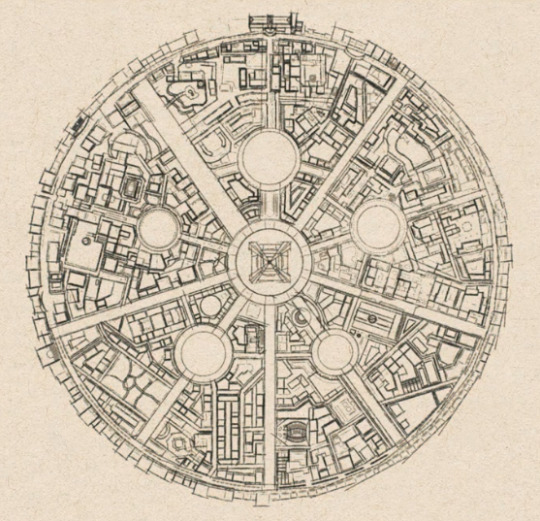

they're near identical, which can lead to the conclusion of the sketches we see in the legends z-a trailer to be a precursor to Lumiose City as we know it in the modern era
but if it's not set in the future, then when is this game set? there's actually a pretty clear cut point this could be set, but we're gonna need some historical context first
ok so basically after the fall of Napoleon and the reestablishment and subsequent failure of Bourbon dynasty, there was another Napoleon, Louis Napoleon III, who was elected president of France and later the emperor of the 2nd French Empire for a while.
during his reign, one of the biggest things he did was, guess fucking what: Urban Development. the first five years of his reign were dedicated to the reconstruction of Paris' streets and plazas, plus things like sewage systems and lamps so that it would just generally be easier to live in
why does this matter? well, it leads us to the conclusion that Legends Z-A might be placed during the Second French Empire, or in other words, the 1860s at the earliest, aka roughly around the Meiji period and by proxy around the same time as legends arceus
do with this what you will, tbh i just wanted to infodump so yeah thanks for reading :)
#pokemon#pokemon legends z-a#kalos#kalos region#lumiose city#long post#infodumping :3#idk what else to tag this but here it is
14 notes
·
View notes
Text
The Six Napoleons
First published in 1904 and in the Return cycle.
There were in fact three French Emperors called Napoleon. Napoleon I is of course Bonaparte and of course a hugely prominent figure in world history.
His very young son spent two short periods as Napoleon II, but the two reigns were never recognised by foreign powers and he spent his life in Austria from 1814 until his death in 1835 from tuberculosis, aged only 21.
Napoleon I's nephew was President of France from 1848 to 1852, seizing power in a coup in 1851 because he couldn't be reelected and making himself Napoleon III the following year. He reigned where he majorly modernised the French economy and launched the rebuilding of Paris, but the 1870 war against Prussia proved a disaster - the army was forced to surrender, he was captured and in his absence was overthrown, ending French monarchy until further notice.
Napoleon seems to have enjoyed somewhat of a fandom in late Victorian England.
'Hooliganism' first appeared as a word in 1894.
Kensington High Street station was opened in 1868, being served by District and Circle Line trains.
A red lamp was a sign of a doctor's surgery. It has fallen very much out of use, unlike the barber-surgeon's striped pole.
Beppo is an abbreviation of the Italian name Giuseppe.
'Rates' is a Commonwealth name for property taxes used to fund local government, although for domestic purposes it has been replaced by Council Tax in England and Wales.
The "outcasts of Europe" would have included a large Jewish population who had fled antisemitism in the Russian Empire. The East End was suffering from major overcrowding, with the tenements generally only going in post-WW2 slum clearance, replaced by council estates and tower blocks.
The 'Mafia' in the Campania region is known as the Camorra and has been around since the 17th century. Their modern activities include illegal waste dumping, with the environmental damage that causes.
There were around 12,000 Italians in London in 1895, with southern Italians generally setting up their home in the Saffron Hill area of Clerkenwell; northern Italians were heading for Soho. The area was later gentrified and their descendants largely moved out, but Saffron Hill still has some Italian connection.
24 notes
·
View notes
Text
For Les Mis Letters context: A quick timeline of French history from the Revolution to 1806, when Myriel becomes the Bishop of Digne:
(I'm marking all the years just to make it easier to visually follow the timeline, but I'm only noting a few events that I think are relevant. Too much happens in this era to list it all.)
THE TIMELINE:
1789: Estates General, the storming of the Bastille (14 July), the National Assembly -> the National Constituent Assembly, abolition of feudal privileges
1790
1791: Constitution of 1791, the Legislative Assembly, France becomes a constitutional monarchy, the Haitian Revolution begins
1792: The Revolutionary Wars begin; the "miraclous" French victory at Valmy, France is declared republic, the National Convention replaces the Legislative Assembly, the Republican Calendar established, etc.
1793: Louis XVI and Marie-Antoinette executed, the counter-revolutionary uprising in the Vendée begins, Constitution of year I, Reign of Terror begins
1794: Reign of Terror ends
1795: Constitution of year III, the more conservative Directory replaces the National Convention, First White Terror
1796: The War in the Vendée ends
1797
1798
1799: Napoleon Bonaparte's coup d'état (18 Brumaire); the Consulate replaces the Directory, Bonaparte becomes First Consul
1800
1801
1802: Bonaparte First Consul for life, the Revolutionary Wars end*
1803: The Napoleonic Wars begin*
1804: Napoleon declares himself emperor (and Myriel has a little chat with him), the Napoleonic Code
1805: Great French victory in Austerlitz against the Russo-Austrian forces, decisive British naval victory against the French in Trafalgar, Republican Calendar abolished
1806: Decisive French victory in Jena against the Prussians (Myriel becomes the Bishop of Digne)
NOTES:
Don’t worry, I won’t list any more specific battles, aside from Waterloo.
Valmy was the first victory of the French Revolutionary army, which proved that French volunteers could match against professional soldiers, Austerlitz is the big one for Napoleon, Trafalgar is the big one for the British, Jena is another big one for Napoleon, and finally Waterloo will of course end it all once we get there.
The only reason I’m even bringing up this many battles is because Hugo is a Napoleon nerd, so unfortunately you will have to hear about them (and many more) sooner or later anyway. (Also I added Valmy just for myself, Hugo only mentions it once in Les Mis)
* I'm not bothering to mark all the different wars; France was almost continuously at war from the 1792 to 1815 (the entire period of the First Republic plus the entire period of the First Empire) with only a few short breaks. People can't even agree on when the Revolutionary Wars turn into the Napoleonic Wars.
I also left out all the constitutions after year III, because there are too many of them and nobody cares.
#les mis letters#i was a bit hesitant to post this#because it seems like such a boring post to make tbh#but whatever yall can skip it if it's boring#long post#sorry#corrections v much welcome btw#im not a frev expert#there are also so many more things i wanted to include but decided not to
88 notes
·
View notes
Text
That French history meme is a super stinker but I gotta say, portraying Napoleon III like this is hilarious.

Yeah, big buff chad Napoleon III, the guy who *checks notes* made two completely laughable coup attempts before finagling his way into becoming Emperor, generally sucked, and pretty much ended his reign by... personally surrendering to the Prussians at Sedan.

76 notes
·
View notes
Text


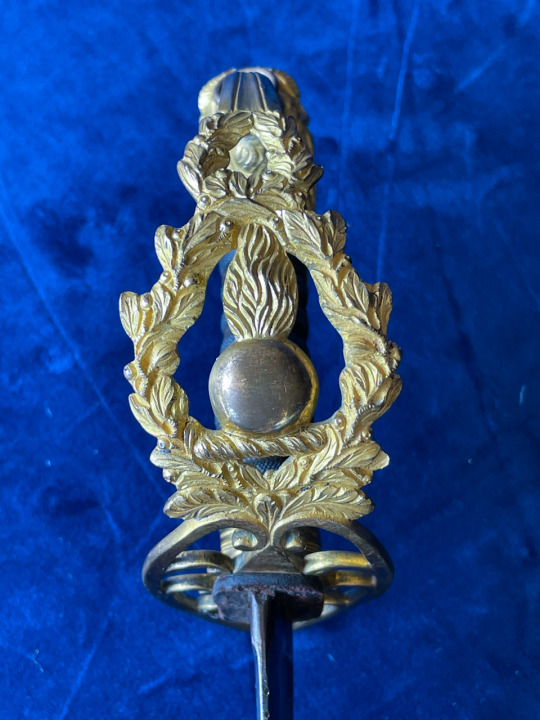

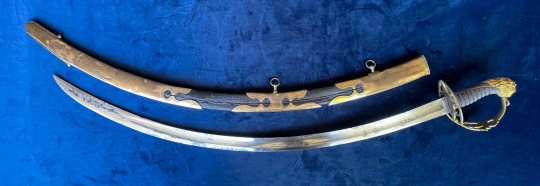
Grenadier Officer’s sabre in the 1803 Pattern ‘Flank Officers’ sabre style.
This is another one of those wonderful swords from the Georgian era that are so hard to neatly slot into a category as modern collectors are wont to do.
The sword has a slotted guard and lions head pommel that is identical to the 1803 Pattern. However, instead of having the GR Cypher of King George III - the reigning monarch at the time. It has the flaming bomb emblem of the grenadiers surrounded by a wreath of Acanthus leaf or possibly grape leaves.
The Acanthus leaf featured strongly in classical Greek and Roman art and was picked up in the Neo-classical style of the Georgian / Napoleonic era.
Because the blade is plain is is difficult to date the sword, but we know that by 1800 Flank officers (Grenadier and Light Company) had been granted leave to carry sabres in place of the 1796 Pattern infantry officers sword. In 1803 this became regulation with the introduction of the 1803 Pattern Officers sword.
The 1803 was an accumulation of features, such as the slotted guard and lions head pommel, that were already popular at the time. So it is possible that this sabre pre-dated the 1803 Pattern. But in the balance of it’s condition and features I suspect this is not the case.
The sabre has a long, heavy blade with a grossly exaggerated curve. Truth be told, it is highly inappropriate for the fighting style taught in this time. It was however very fashionable, and many officers of the British and French armies were more than happy to forego practically in favour of fashion.


In the end, it doesn’t really matter what the pattern is. It’s a great looking sword that nicely illustrates one of the unique style of swords from the era.

Different 1803 Pattern Officer’s sabres showing the variation in length and curve:
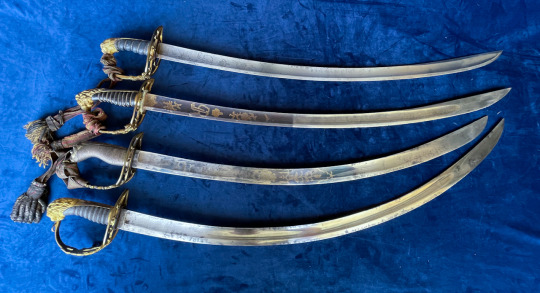
Stats:
Overall Length - 956 mm
Blade Length - 822 mm
Grip Length - 138 mm
Inside Grip Length - 96 mm
Weight - 890 grams
Total Weight - 1,450 grams
Point of Balance - 170 mm
#Swords#Sabre#Napoleonic era#Georgian Era#Antique#Antique Weapons#1803 Pattern Officers Sabre#19th Century#British Army#Military Antiques#Infantry Officer#Grenadiers#Grenadier Officer#Flank Officer
69 notes
·
View notes
Note
hi if this isn’t a major invasion of privacy, can you share about mourning hair jewelry collection with the class??
Aaaah thank you! my collection is currently in storage in France because the weather here being very high humidity and heat I didn’t want to risk it. I just took 2 with me. I started my collection 3 years ago so I “only” have 8 pieces rn, plus that’s one expensive hyper fixation (the least expensive ones are around 100€)
I call it Victorian in English, but they are from France, so technically they are reliquaries from the Napoleon III reign, made of dead people’s hair (I love to call it that in French, it freaks ppl out hahaha sorry) and I only have 1 from England, a gorgeous brooch that my friend @artbeautyfun gave me for my birthday a couple of years ago!
Some of them are very simple, just a hair strand encased in glass, others are full art pieces made out of hair and it’s !!!!!!! (They usually go for like 400€ and that’s way out of my budget!) bonus points when there is info about the maker on the back, or names and dates!
Here are the only pictures I have of some of the babies




I could look at them for hours!!
Thank you 🤍
#mourning hair art#thank you#the first pic is my old flat and I miss it so muuuch although the wallpaper was aaaa not our choice
15 notes
·
View notes
Text
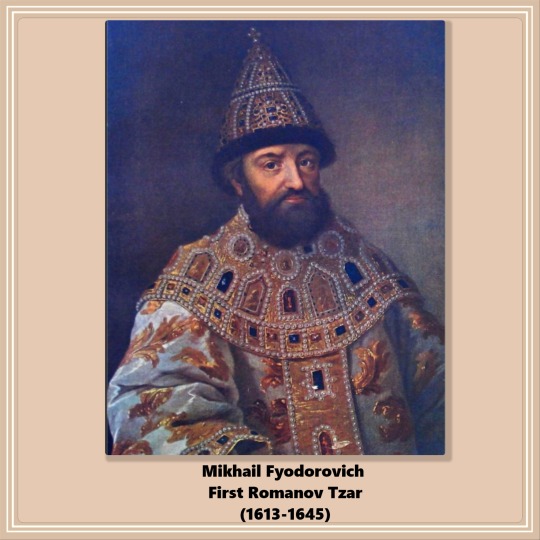






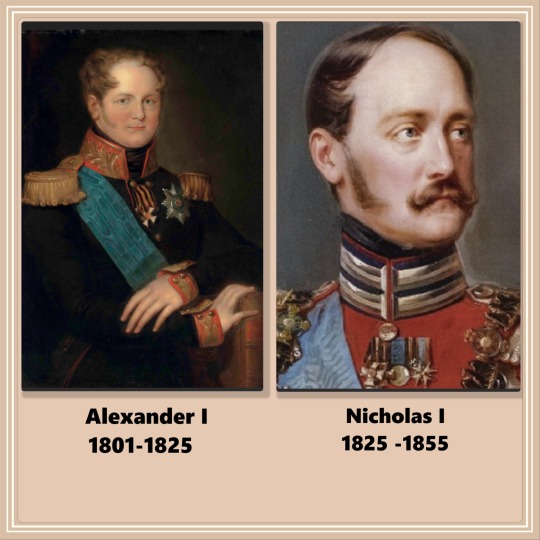

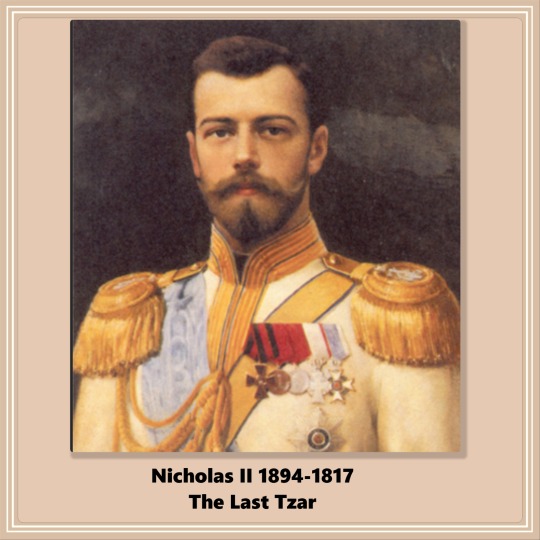
👑The Romanov Dynasty
The Grand Duchy of Moscow under Prince Ivan III was the first unified state on Russian territory. With him began the Rurikid Dynasty (the Rurikid had been around for a long time along hoards of tartars).
The Rurikid ruled from the 1400s until the 1600s. Ivan III can be considered the founder of Russia. While the Rurikid were in power, the Romanovs were boyars (nobles) in their courts. When the Ruriks became extinct, the Romanovs took over. The "Zemsky Sorbor" (a rudimentary parliament) elected Mikhail Feodorovich as the first Romanov Tzar.
The direct male line of the Romanovs ended with Elizabeth of Russia, who was childless. Her nephew Peter III, a member of the House of Holstein-Gottorp (a cadet branch of the German House of Oldenburg that reigned in Denmark), ascended to the throne and adopted his Romanov mother’s house name. Descendants after Elizabeth are sometimes referred to as "Holstein-Gottorp-Romanov."
The above is a gross oversimplification of a very complex course of events.
Highlights about each Romanov Tsar/Tsarina:
👑Mikhail Feodorovich (1613 - 1645): First Romanov Tsar
👑Alexei Mikhailovich (1645 - 1676): Encouraged trade and cooperation with Europe. Father of Peter the Great
👑Feodor III (1676 - 1682): Had very poor health and spent most of his reign in bed
👑Peter I and 👑 Ivan V (1689 - 1785): It was complicated. The two of them were Tsars under the regency of their older sister Sophia.
👑Peter I (1689-1725): Reformed Russia's politics, government, and culture. Made Russia a military power.
👑Catherine I (1725-1727): At the time of Peter the Great's death, the mechanism for succession consisted of the Tsar selecting his successor, but Peter did not elect one before dying. His wife became the Tsarina, but others governed through her.
👑Peter II (1727-1730): Peter's grandson; ascended the throne at 11 and died at 14. The "Privy Council" or "Soviet" ruled through him.
👑Anna Ioannovna (1730-1740): Daughter of Peter's half-brother Ivan. The Privy Council invited her to rule (wanting her to be a puppet), but she disbanded them and ruled herself successfully.
👑Ivan VI (1740-1741): One-year-old son of Ana's niece. She left the throne to him, expecting his mother to govern. Elizabeth, daughter of Peter the Great, deposed him (and his mother.)
👑Elizabeth Petrovna (1741-1761): Last Russian on the Russian throne; her twenty-year reign was successful.
👑Peter III (1761-1762): Grandson of Peter the Great and next in line for the throne after Elizabeth. Ruled for only half a year before being deposed by his wife, Catherine. He was murdered soon after the coup d’etat.
👑Catherine the Great (1762-1796): Her accomplishment went from the Empire’s territorial expansion to political development to the proliferation of sciences. However, the Empire had an enormous external debt by the end of her reign.
👑Paul I (1796-1801): Paul, the son of Catherine the Great and Peter III, became Emperor at 42 after the death of his mother. He started a lot of major military and political reforms. Paul was murdered in a coup d'etat. Paul decreed house laws for the Romanovs (the Pauline laws) – among the strictest in Europe – which established semi-Salic primogeniture and required Orthodox faith for the monarch and dynasts
👑Alexander I (1801-1825): During his reign, Russia defeated Napoleon's forces (which got as far as Moscow in their attempt to conquer Russia.) There was also great development in culture and arts.
👑Nicholas I (1825-1855): Paul I’s third son, younger brother of Alexander. Started railroad construction in Russia, boosting industrialization. Codified Russian laws and reformed finances.
👑Alexander II (1855-1881): His major reforms included the peasant emancipation of 1861, military reform, and the introduction of new types of self-governing village societies and more. Unfortunately, he fell victim to a terrorist after five attempts.
👑Alexander III (1881-1894): Russia didn’t enter any wars in his time. His domestic policy was conservative. He amended the Pauline laws. The economy flourished. But the revolution was brewing below the surface.
👑Nicholas II (1894-1917): His policies were unsuccessful. Established the first official Duma in 1905, but it was too little too late. With the advent of WWI, the Russian Empire ceased to exist. He abdicated. (gcl)
Sources:
Panov, A., Delaroche, P., & Abramuchkin, Y. (2021, July 31). The Complete List of Russian Tsars, Emperors, and Presidents. Russia Beyond. Retrieved June 20, 2023, from https://www.rbth.com/history/334065-complete-list-of-russian-tsars-emperors-rulers-presidents
#russian history#imperial russia#romanov dynasty#Nicholas II#Alexander III#Alexander II#Alexander I#Catherine I#Catherine II#Nicholas I#Paul III#Elizabeth Petrovna#Mikhail Feodorovich#Alexei Mikhailovich#Feodor III#Ivan VI#Peter I#Peter II#Peter III#Anna Ioannovna#Romanov Tsars#gcl
26 notes
·
View notes
Text
Thutmose III has been called “the Napoleon of Egypt”, regarded as a military genius from a young age. What were his outstanding achievements throughout his reign, and how did he become one of Egypt’s incomparable leaders?
36 notes
·
View notes
Text
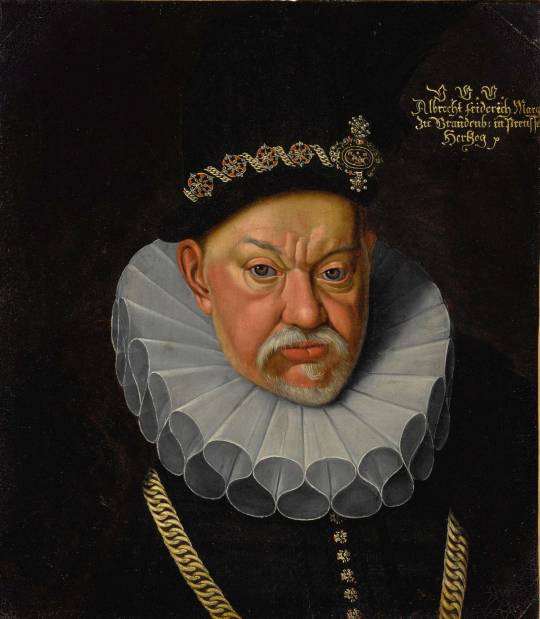

Albrecht Friedrich (r. 1568-1618)
Duke of Prussia
Thanks to his pedigree and fluency in Polish, he was a serious contender for the Polish throne for a time.
Married Marie Elenore of Cleves, whose marriage alliances secured Brandenburg's claim to Jülich...on paper.
Four years into his reign, he began to display signs of an unspecified mental disorder. That didn't inhibit his ability to produce many, many heirs.
Friedrich Wilhelm III (r. 1797-1840)
An inconsistent ruler. His instinctual need to find balance impeded him from choosing a decisive action. I believe in modern parlance this is called a 'centrist.'
(Note: Political humor may be divisive to readers -T)
Suffered a string of humiliating defeats against Napoleon that reached their pinnacle with Jena and forced alliance with France. This was the event that forced him to finally listen to his wife, Louise, as well as the pro-reform ministers Gneisenau and Sharnhorst (among others).
In spite of his many flaws as a statesman, he was a better family man than the Hohenzollerns typically produce. By all accounts his marriage with Louise was one of mutual love and respect. One of my sources revealed to me that he was shocked to learn his children referred to him as 'the king' instead of 'papa.'
#albrecht friedrich#friedrich wilhelm iii#frederick william iii#hohenzollern bracket#staffer theodor#round one
8 notes
·
View notes
Text
There was a famous Napoleon who had to abdicate his entire throne twice!
It wouldn’t have happened if I had been around.
How many times were Napoleons deposed without me? Twice. Four times if we include Napoleon II’s 2 second reigns. More if we include Napoleon III’s.
How many Napoleons have been deposed with my guidance?
None. The coalitions wouldn’t dare.
They’d know Isthenapoleoncute would be right on their tail.
7 notes
·
View notes